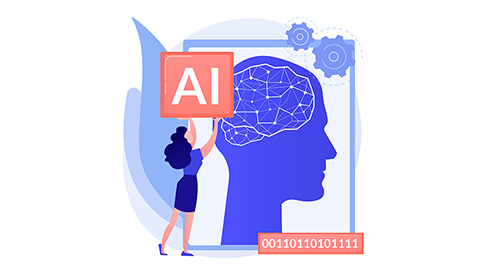The Benefits of Headless Commerce for Digital Marketers
The eCommerce world is full of buzzwords, and headless commerce is one of the most popular. This type of commerce is trending among tech developers and SEO experts, but many people still don’t understand its purpose and benefits entirely. In this article, you will learn what it is and why it is beneficial for you.
What Is Headless Commerce?
Headless Commerce is a term that explains software architecture and separates the frontend or the UI from the backend. As you know, these two units are connected with API. However, it is more than just decoupling the back-end and the front-end. Headless commerce opens up endless possibilities that help the users differentiate, as well as enrich the user experience.
Users today base most of their experience on the performance of the front-end, while the back-end is the place where things are stored and managed. While the two are linked in the traditional eCommerce products, they are split in this modern type of commerce. So, when a change happens, it doesn’t affect the other.
Headless commerce is amazing for customization, it can speed up the time-to-market process and help brands fulfill the expectations of their customers more efficiently. The big fuss around it is because it offers freedom to both platforms and allows them to operate independently, while brands can still use an API to connect and control them.
Headless vs. Traditional Commerce
In traditional commerce stores, if you need to change the interface’s design, you must also update the back-end. It’s labor and time-consuming. Compared to this, headless commerce allows you to tweak them separately, giving you more options and better customization.
When many businesses find their online stores lacking functionality, they opt for headless systems for more room for customization and personalization. Personalization is vital to the success of an eCommerce store these days. Research shows that 80% of shoppers will likely buy from your brand if it offers personalized experiences.
So, while traditional systems provide every component necessary to handle business logic, publish and manage content, and display UI layers, headless commerce separates the units. The units are connected and ‘communicate’ via APIs in this new modern system.
The Benefits of Headless Commerce
Now that you know the difference let’s consider this system’s benefits.
1. More Flexibility in Front-End Development
In traditional platforms, developers were limited by the themes that the platform offered them. Since they couldn’t change the back-end part, their options for front-end development were not versatile. If you use headless commerce, on the other hand, you aren’t limited with data. You can determine the data you want to get on the front-end page through APIs and use technologies like Angular and ReactJS to get more flexibility in development.
Unlike most traditional commerce platforms today that impose one programming language, headless commerce gives developers the freedom to build using different frameworks and languages. This gives you tons of opportunities for creativity and allows you to use the language you are most familiar with.
2. Higher Personalization
Forrester shows that 77% of customers will choose, pay more, or recommend a brand that offers a more personalized experience. Personalization is very important for attracting and keeping customers in your eCommerce store today. Most marketers and developers today focus on this – and headless commerce helps them achieve them.
By using the conventional method, developers have a limited number of themes that customers have seen many times before. With headless commerce, you can create more unique offers and stand out in the crowd.
3. Omnichannel System
Your customers will buy from you when they want, from different devices and channels, as well as reach out to you in different ways. With headless commerce, you can enjoy a more seamless user experience because of the omnichannel system. You can create your content in a single place and use APIs to manage its publishing.
4. Flexibility and Scalability
With more choices comes a higher level of flexibility, as well as scalability. Since this process is fully customizable, small businesses can work their way up and scale up as they progress. You can easily create a new marketing campaign, and introduce new products without much effort and time wasted on coding and adaptation with different channels.
5. SEO Optimization
How fast your site loads and how optimized it is for the users can do wonders for your spot in a search engine. One of the best perks of headless commerce is that it allows you to fix performance issues really fast and efficiently. Many of those issues need tons of time and hard work with traditional systems.
On top of this, you can use the method to render the URLs in a required format to optimize them for search engines. In comparison, traditional systems have URLs in a specific format that cannot be formatted to boost the SEO rating.
6. Higher Conversion Rates
Imagine having a platform where people are excited about the products or services offered. If you use headless commerce to personalize your brand’s offerings, you can offer just the right products and services to the right person.
Headless commerce allows you to create excitement about your brand in unique and flexible ways. You can create promotions that are not general, but individual. You can also create interactive experiences based on past purchases or searches, and create quizzes and content, all to keep your audience engaged and interested. With higher personalization come higher conversion rates.
7. Affordability
Last but not least, this is a more affordable solution. Even though it might not seem that way at first, headless commerce is cheaper than traditional solutions in the long run. Switching to it can be costly, but you’ll be saving tons of money on tech support costs, expert payments, etc.
Headless commerce is not for every business, but if you want to reap these benefits and like the idea of more flexibility and customization, this is a great choice for you. If any, if not more than one of these reasons is on your wish list for your eCommerce business, you should definitely consider moving to a headless architecture.



Leave a Reply